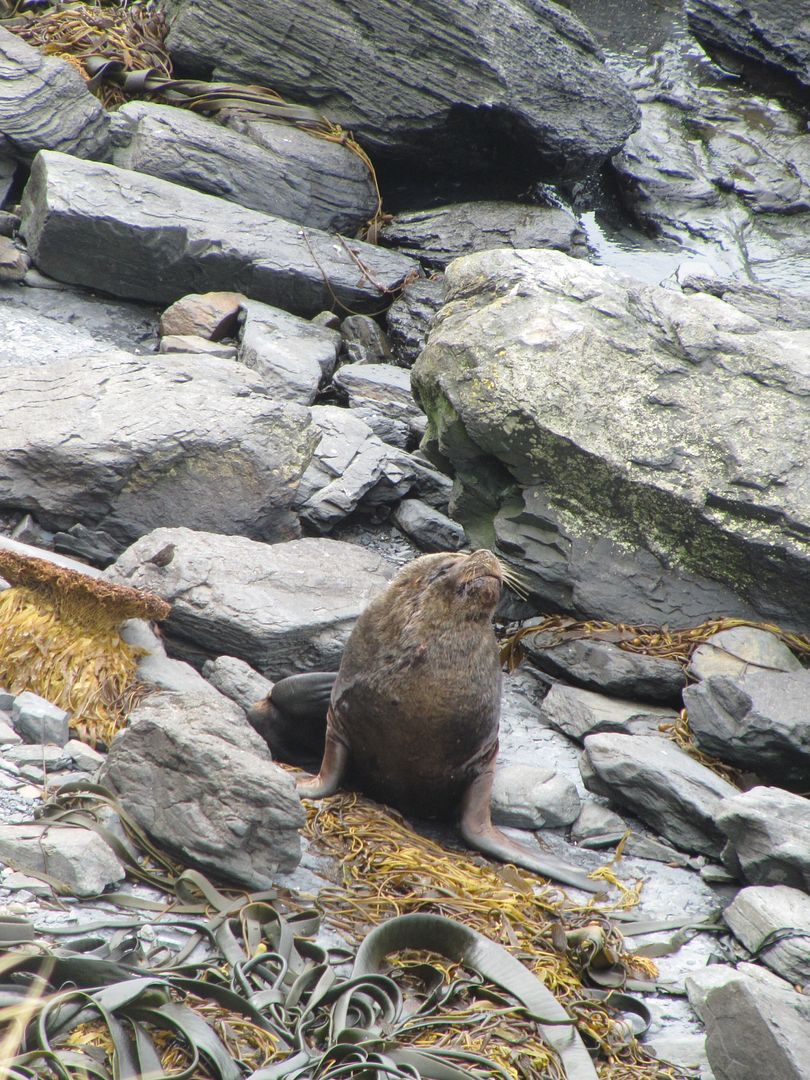 |
| Sea Lion on Sea Lion Island |
In the lodge we had tea and coffee waiting, but we were somewhat more interested in looking out of the lounge windows to see the hundreds of Gentoo penguins about a hundred and fifty metres away.
In the afternoon, Jenny drove us around the island to show us where the various wildlife could be found. Our first stop was at the top of the cliffs where we could look down onto the sea lions. At first you think you can just see the rocks, and then one of the rocks moves and you realise it is a sea lion after all. Once your get the eyes accustomed, you can spot them all. And you can easily hear the males' loud roars. You just have to be a bit careful not to get too close to the edge as the winds are pretty gusty and it's a long way down.
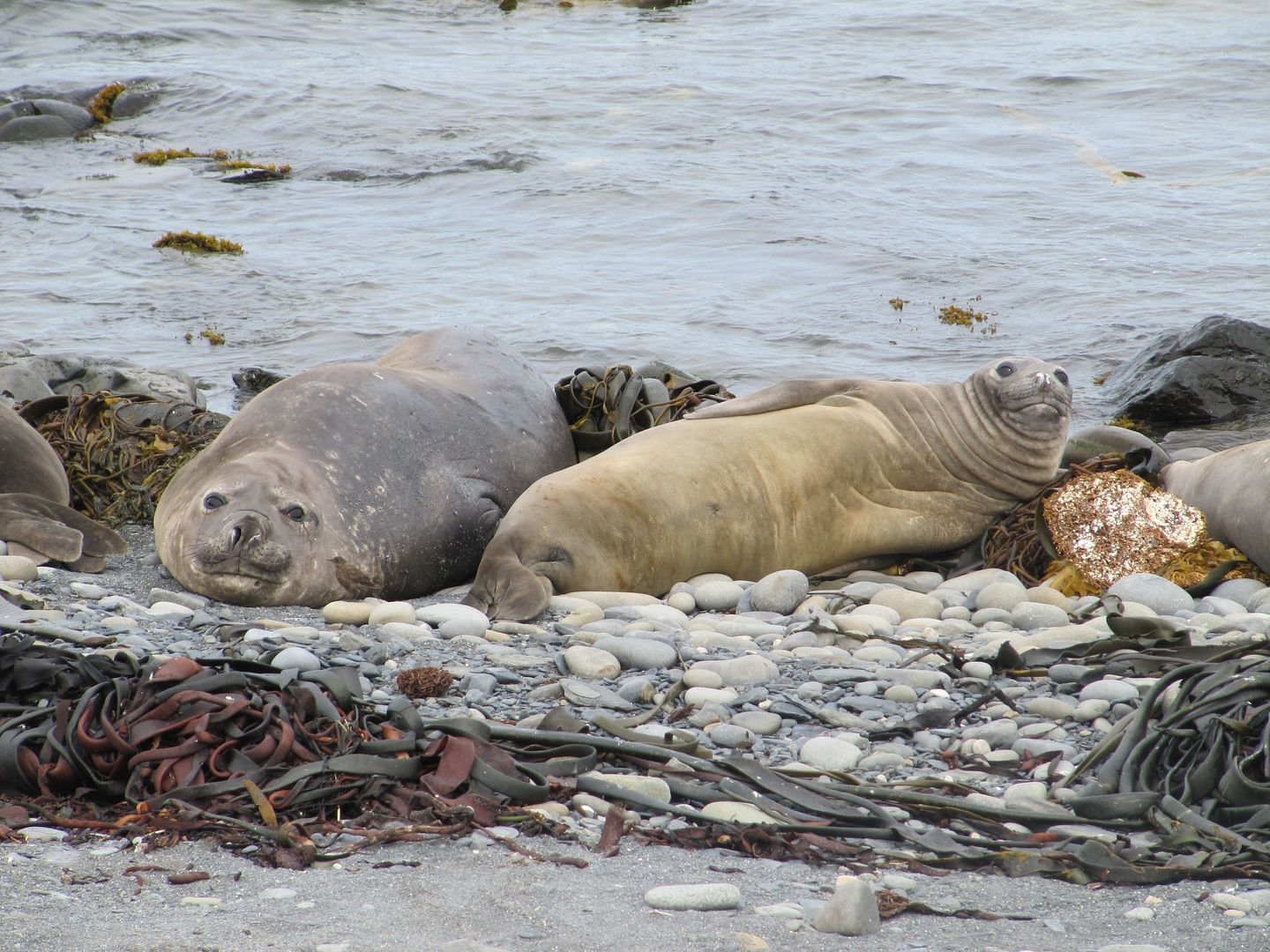 |
| Elephant Seals |
Next were the elephant seals and a few Magellanic penguins. We took a bumpy drive through the huge tussac grass, and came out onto the beach to find the penguins running along in front of us. They mostly kept their distance, but not far from where we stood was a small group of elephant seals and a big male sea lion.
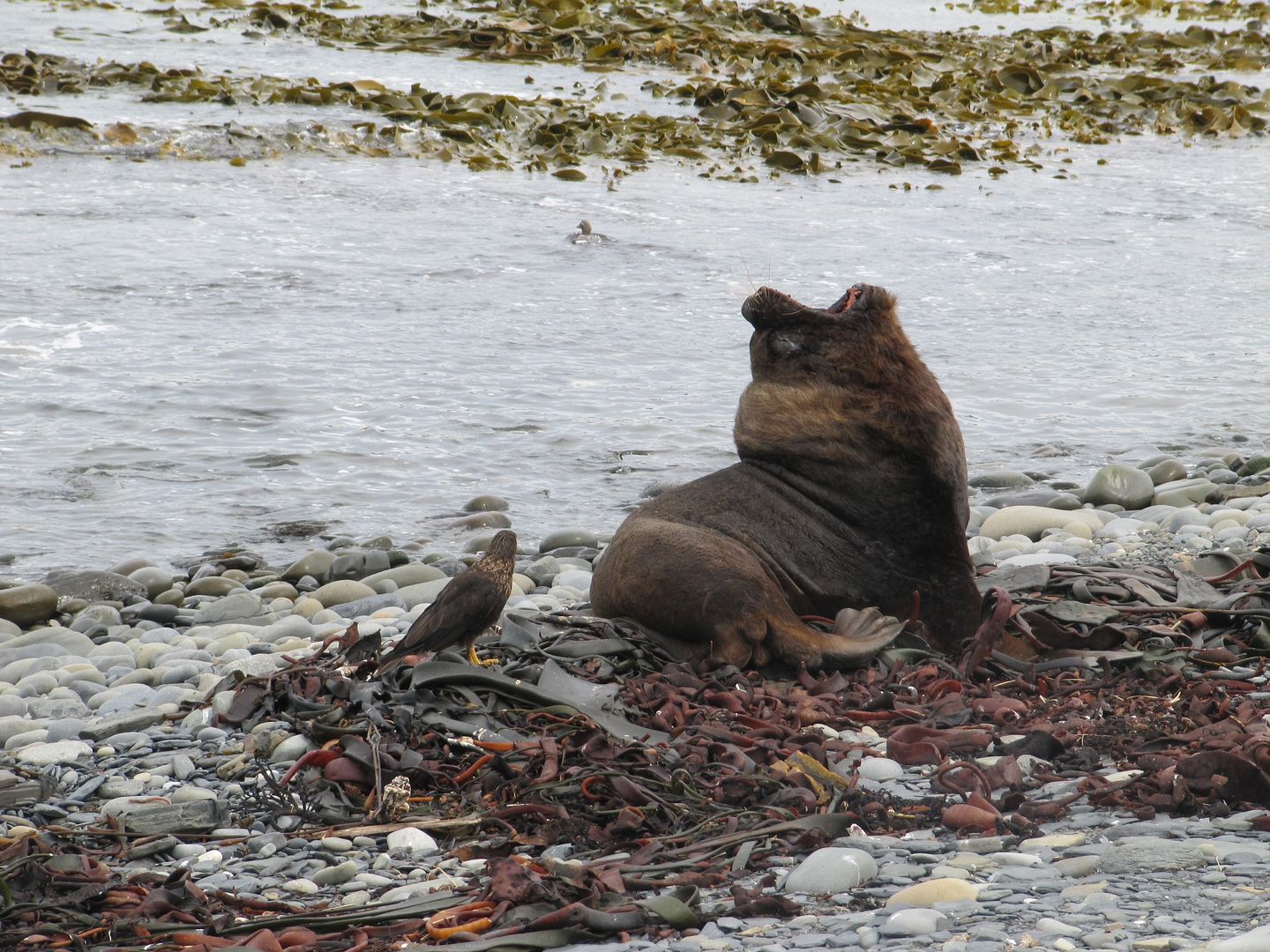 |
| Sea Lion roaring |
Elephant seals (and sea lions) can move a lot faster on land than you would expect, and they can be quite nasty if they feel threatened, so the rules are to keep at least three of their lengths away from them, and don't get between them and the sea or their cubs if they have them. We kept the appropriate distance and didn't seem to bother them, though we could see that there was normally at least one of them keeping a watchful eye on us just to be sure we didn't need to be seen off.
 |
| King and Imperial Cormorants |
Our third stop was heralded by that horrible fishy smell that you get around big groups of seabirds. It was a large colony of king cormorants with some imperial cormorants in amongst them.
With the number of birds flying around, we regarded ourselves very lucky not to have been pooed on by the time we left.
 |
| Rockhopper penguin |
Then it was off to see the rockhopper penguins. They were nesting alongside more cormorants and it was strange to see the two very different birds sharing the space. It seemed to confuse one of the baby rockhoppers, it was standing looking up at the cormorants flying above it, and was flapping its wings as hard as it could as if it thought it should be able to fly too.
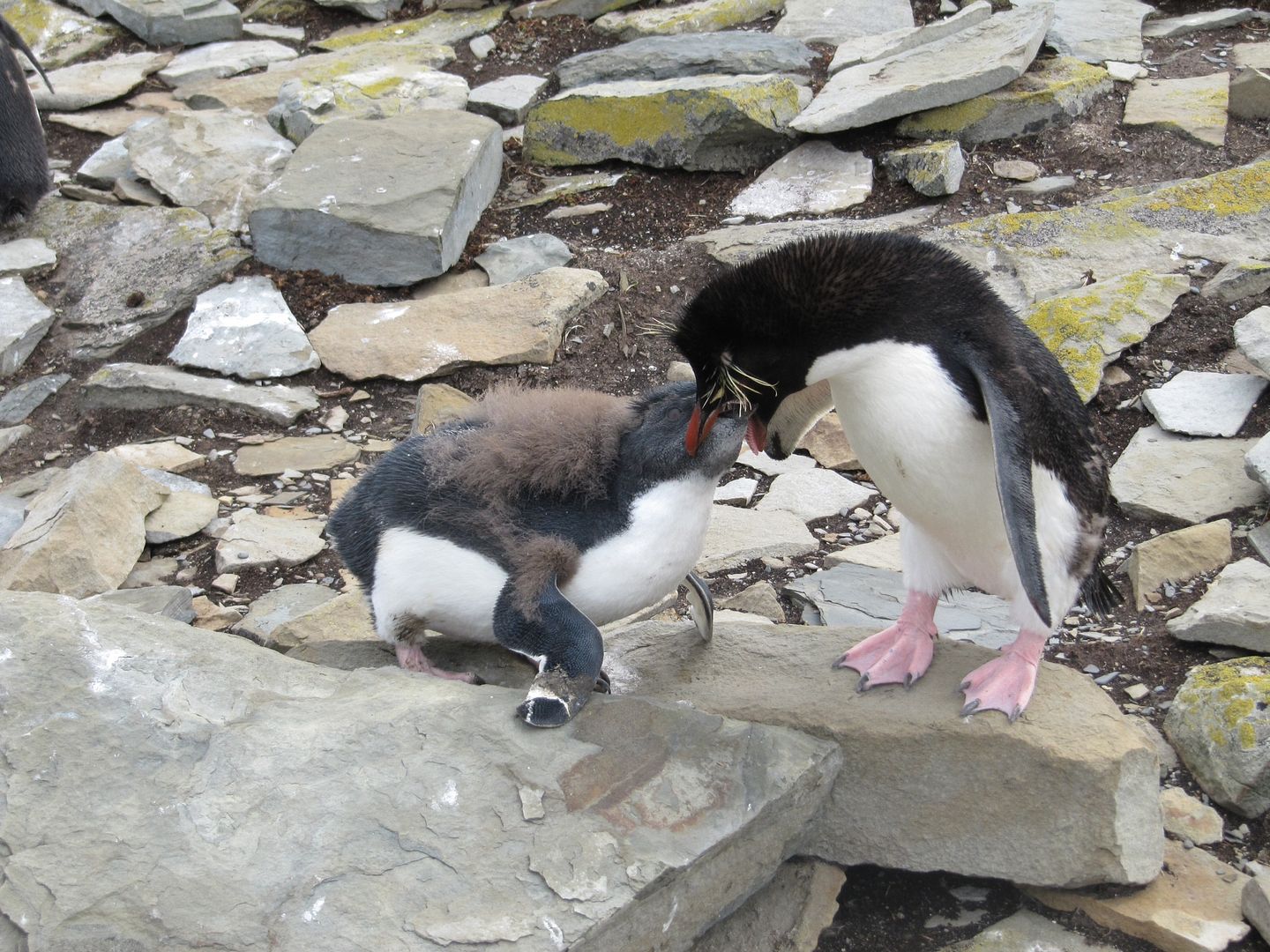 |
| Rockhopper chick feeding |
We spent some time watching a couple of chicks chasing around one of the adults for a feed. The adult was happy to feed one, but not so keen on the other. We weren't clear if the second was supposed to get food from it or not, but eventually another adult seemed to intervene on the second chick's behalf and persuade it to feed that one too.
 |
| Porpoising Gentoo Penguins |
Back towards the lodge, we stopped off at the beach to watch the adult gentoo penguins coming back from the sea. From being little black and white specks, bobbing around out at sea, you could gradually see them a they got closer, porpoising in and out of the waves.
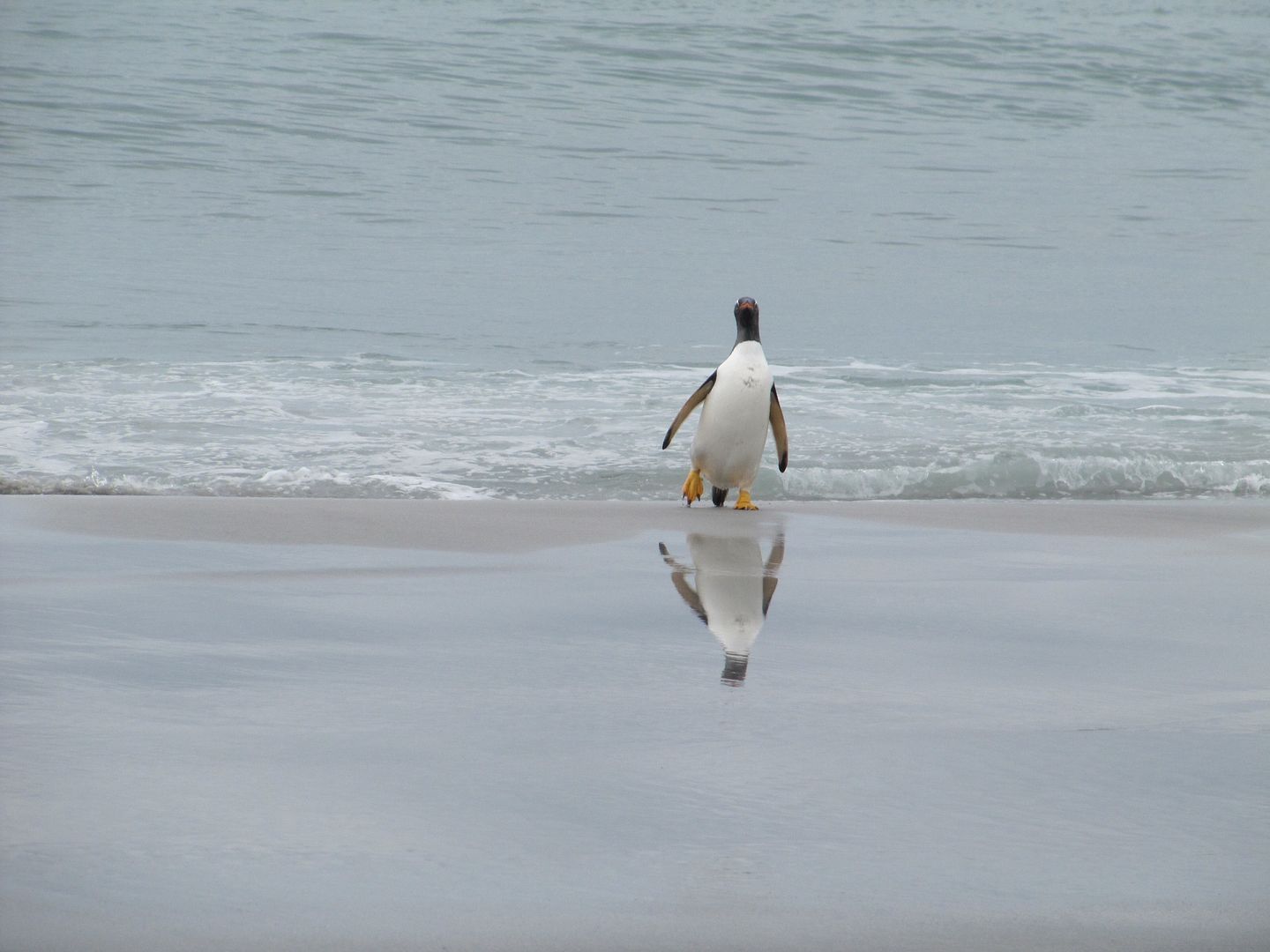 |
| Gentoo penguin |
Some of them timed it right so that they came in gently and were able to waddle out of the water, but others came crashing in on their stomachs and slid up on to the sand. Most of them then hung around the beach for a while, perhaps swapping stories of what they had caught and the ones that got away, before tottering their way up to the grass by the lodge.
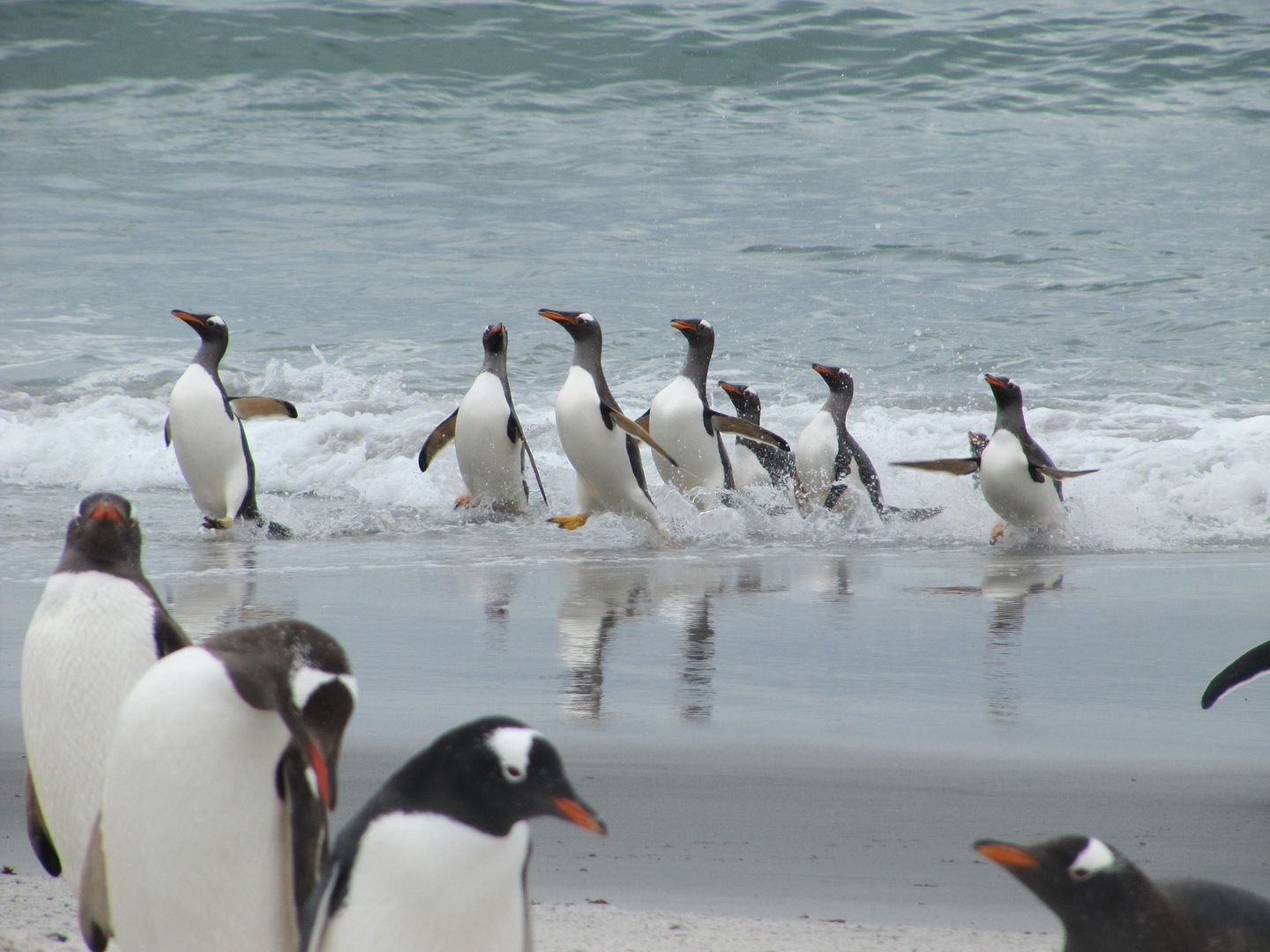 |
| Gentoo penguins coming to shore |
We didn't want to disturb them as they walked back, so we took a wider route around, only to suddenly realise that we were in the middle of the magellanic penguins burrow territory. The magellanics make little burrows in the ground rather than nests, and we were now picking our way through a multitude of them, trying not to step on the shallow entrances that could easily collapse.
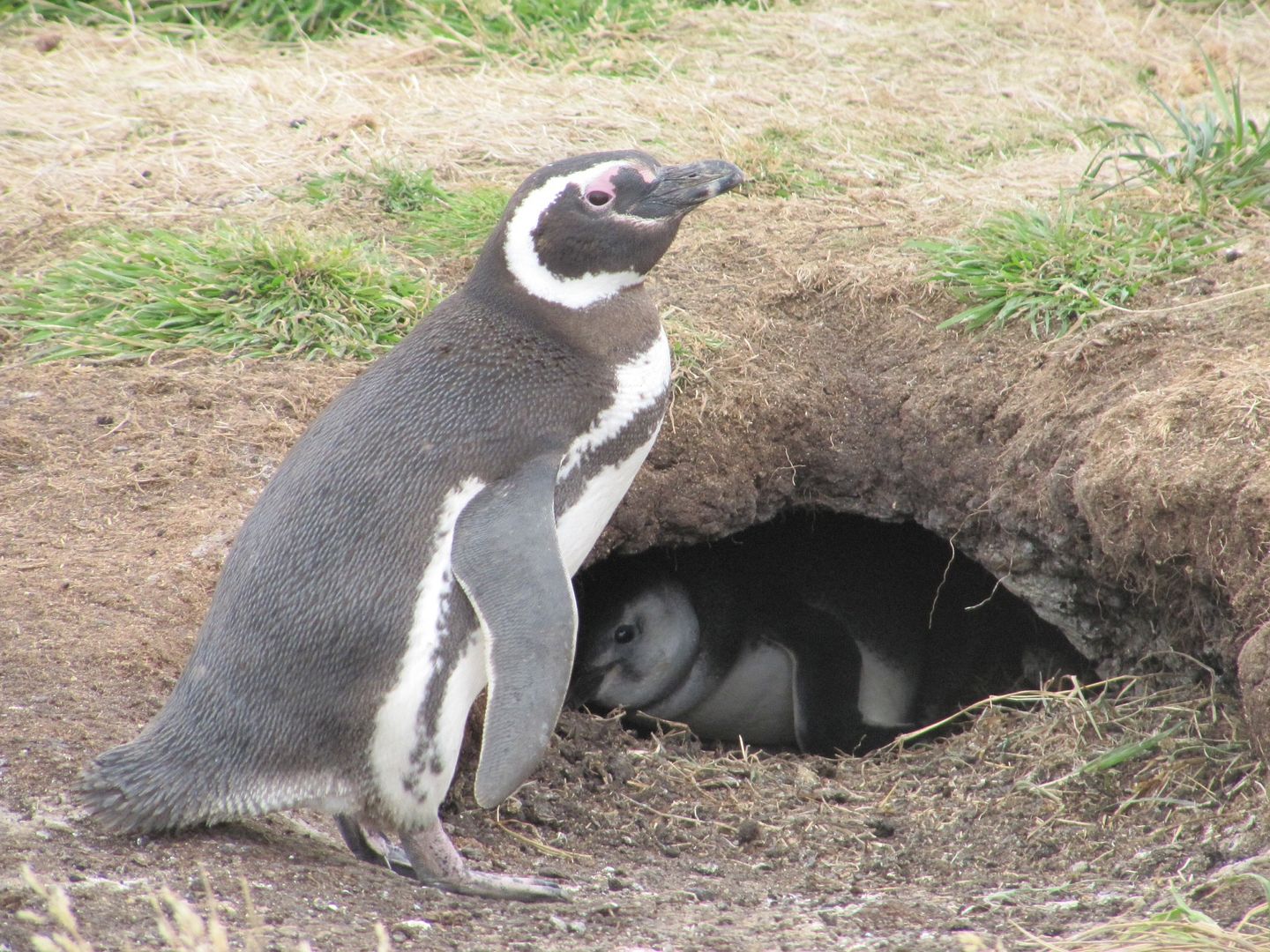 |
| Magellanic penguin and chick in burrow |
Most of the burrows are empty by this time of year, so walking through was not going to disturb them, and we took care not to get too close to those where a penguin was still standing sentry over its chick. These ones were quite amusing as they watched us get nearer, twisting their heads around so that they could see us better. They seemed to realise that we weren't a threat, and were going to pass by, but still they would dip into the burrow just to be on the safe side.
We made it through without stepping on a penguin, or getting attacked by the skuas that also had nests around and are quite vicious if you get too close to them, and got back to the lodge for tea and cake.










No comments:
Post a Comment
We like to hear from you too, so please leave us a message here. We are also happy to answer any questions if we can help. Comments are moderated so will not appear straight away and there could be some delay in replying if we are travelling.